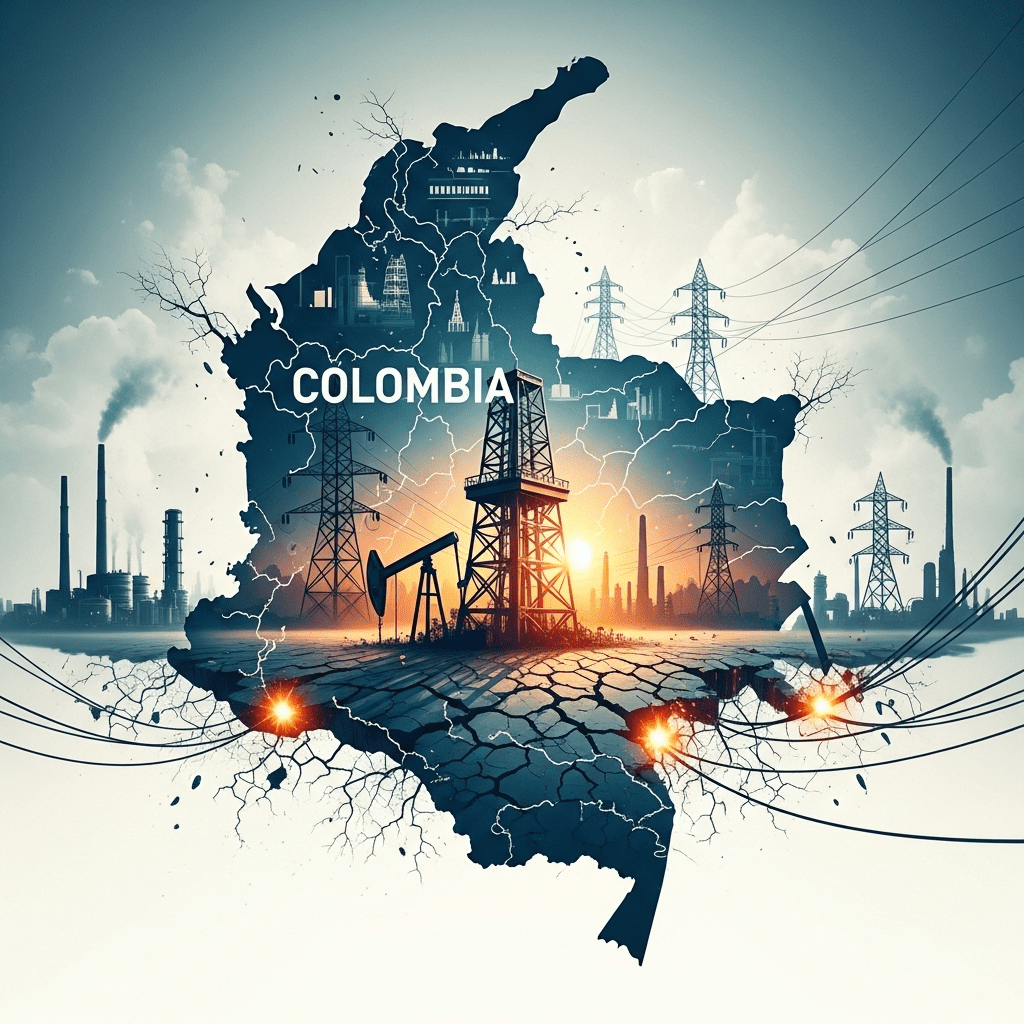The harsh reality that dwindling gas reserves threaten Colombia’s economy and power grid is coming into focus as energy leaders and investors evaluate the nation’s future. This growing challenge places Colombia at a critical crossroads, as it grapples with shrinking domestic natural gas supplies, rising energy demands, and increasing economic risks for key sectors including manufacturing, power generation, and exports.
Why Dwindling Gas Reserves Threaten Colombia’s Economy and Power Grid
Natural gas is vital for Colombia, powering approximately a third of its electricity and supporting major industries. In recent years, however, analysts and government agencies have sounded alarms: proven gas reserves have dropped sharply—reportedly declining by over 20% within the past five years. This decline is due both to maturing fields and delayed exploration projects, fueling fears that Colombia could face a supply deficit as early as 2026.
When dwindling gas reserves threaten Colombia’s economy and power grid, it translates into real risks. For the national economy, reduced domestic gas supplies drive up energy costs and threaten competitiveness, especially for energy-intensive industries such as cement, petrochemicals, and steel manufacturing. For the grid, a shortage means increased vulnerability to outages, particularly in periods of drought when hydroelectric output drops.
Unlike other Latin American countries, Colombia’s export-driven economy depends heavily on energy price stability. Natural gas not only lights homes and factories but also enables vital exports of fertilizers and chemicals. Foreign investors watching energy volatility may temper their confidence or redirect capital, seeking investment insights elsewhere.
Impact on Energy Security and the National Grid
Rising demand across urban and industrial centers places further strain on Colombia’s grid infrastructure. If gas supplies remain constrained, power utilities would be forced to ramp up costly—and often dirtier—fuel oil imports or switch more generation to coal. Both scenarios bear environmental and financial costs, risking the nation’s progress on emissions targets and green energy commitments.
The national power grid also faces reliability concerns. Instances of load shedding or rolling blackouts could rise if additional energy sources are not brought online. Such risks may threaten Colombia’s economic growth projections and attractiveness as a manufacturing destination, putting pressure on both policymakers and the private sector.
Strategic Responses: Exploring Alternatives and Investments
As dwindling gas reserves threaten Colombia’s economy and power grid, industry leaders and government officials are accelerating efforts to attract new investment in exploration, develop LNG import terminals, and diversify the national grid with renewables. Recent government auctions have helped incentivize solar and wind power; however, these sources alone cannot yet substitute for natural gas as a baseload power supply during peak demand.
LNG imports have emerged as an urgent solution. Terminal expansions on Colombia’s Caribbean coast could allow more imported gas to reach major population centers. Yet, this approach comes with its own set of challenges—namely, vulnerability to global price swings and foreign exchange risk, which adds volatility for domestic industries.
Policy Outlook and Implications for Investors
The Colombian government, aware of the mounting risks, has proposed measures to encourage upstream gas exploration and streamline regulatory processes, hoping to reverse the reserve decline. Nevertheless, regulatory uncertainty, social concerns, and infrastructure bottlenecks remain hurdles to rapid progress. Investors assessing the potential of Colombia’s energy sector should monitor evolving energy policy, regional trade agreements, and emerging market strategies to evaluate both risk and opportunity.
Beyond short-term fixes, experts underscore the need for structural reforms. These include strengthening the investment climate, modernizing the nation’s transmission grid, and fostering public-private partnerships to catalyze innovation and capital. For those who follow global energy trends, Colombia’s response could provide a blueprint—or a warning—on managing natural resource scarcity in emerging markets.
Conclusion: Preparing for Colombia’s Energy Transition
As dwindling gas reserves threaten Colombia’s economy and power grid, the stakes are higher than ever for investors, policymakers, and industry leaders. Navigating this transitional period will require urgent action, diversified investments, and collaborative efforts to secure energy, ensure stability, and safeguard economic growth through 2025 and beyond.
